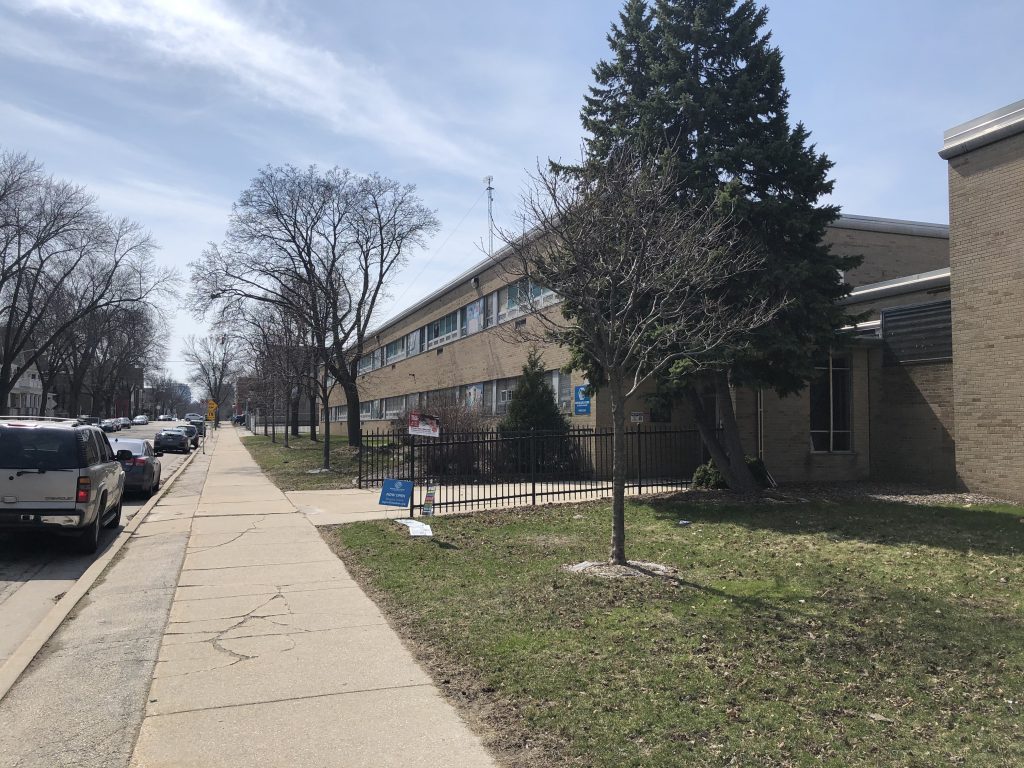Report Finds High Teacher Turnover in State
Problem biggest for MPS and other districts and schools teaching vulnerable populations.
Teacher turnover surged in Wisconsin in 2023 as a record number of teachers moved between districts, and the most teachers since 2012 left public school classrooms altogether, a Wisconsin Policy Forum (WPF) report finds.
The report found that since 2009 an annual average of 11.5% of teachers switched schools or left education altogether. “Turnover was caused to a greater extent by teachers exiting public school classrooms altogether, rather than moving between districts,” the report noted.
The impact was greatest impact for certain districts and teachers: “Turnover overall from 2009 to 2023 was more prevalent among teachers of color than their white counterparts, in districts serving vulnerable student populations, and among rural school districts as well as those with the lowest enrollment.” That includes Milwaukee Public Schools, which faces a teacher shortage exacerbated by teacher turnover, as Urban Milwaukee has reported.
The new report used public school staffing data from the state Department of Public Instruction going back to 2009 to determine teacher turnover rates for individual districts and the state as a whole. The analysis examined nearly 116,000 teachers at roughly 450 school districts and other K-12 entities over the 15 years
As noted by both the report and past reporting by Urban Milwaukee, rural and urban districts are the biggest losers from teacher turnover. Wealthier districts also lost teachers but actually gained more teachers from urban and rural districts than what those districts gave in return. In short, richer districts are taking teachers from poorer districts.
The lowest rate for state teacher turnover was 7.8% in 2011 probably reflecting the lack of jobs outside of education during the Great Recession. It jumped to 13% the following year and hit 15.8% in 2023, as a heated economy caused employee shortages nationally.
The MPS annual turnover rate was 15.4% over the 15-year period studied, considerably higher than the 11.5% state average, the report found. Most of the turnover was due to the “leave” rate of 13.4%, teachers leaving education altogether. MPS had a much lower rate for teachers taking a position in another district. The “move” rate was at 2.0% while the rest of state had a “move” rate of 2.9% over the period studied.
However, it may be that some MPS teachers wanted to teach in a suburban district, but were not able to secure a position there. The report did not examine this possibility. The biggest MPS teacher loss came from retirees and younger teachers finding positions outside education. In Milwaukee, both administrators and the local teachers’ union, Milwaukee Teachers Education Association, believe that pay and benefits are a determining factor in moving to other school districts.
But the WPF states “available data do not wholly support this hypothesis” pointing out that wages were “higher than most of the top 13 districts to which teachers from MPS move, with the sole exception of Elmbrook.”
WPF considers working conditions to be more important in attracting teachers. “Our analysis further found that turnover has been highest in rural and city districts with large proportions of low-income students and students of color, in districts with very small student bodies, and for teachers of color,” the report noted. “It is possible that MPS teachers are at particular risk of leaving the classroom or state altogether because of challenging working conditions. The district is home to students from some of the most historically disadvantaged communities in the state, including a relatively high proportion of students with special needs, and it has struggled to equip all schools with the appropriate resources to serve them well.”
Teachers of color leaving education at a higher rate than white teachers may be misleading since most teachers of color teach in urban settings and leave teaching at a rate closer to the rate of white teachers in the same setting. However, the loss of teachers of color should be of particular concern since numerous studies indicate that minority students do better when some of their teachers look like them.
MPS has made it a priority to address the teacher shortage. “I ask all staff and families and community members to remember and promote MPS career opportunities,” said MPS superintendent Keith Posley at the July 27 school board meeting.
MPS had 234.2 teacher vacancies as of that date. However, “this is an improvement over last school year,” as Adria Maddaleni, MPS chief human resources officer, noted at the same meeting.
As Urban Milwaukee has reported, the greatest number of vacancies last year were in central city schools. MPS is addressing those staffing inequalities using a three-tiered, color-coded identification system.
“Red” are schools with three or more vacancies. Maddaleni noted that these schools are prioritized and get help from “talent management to expedite interviews of quality applicants” and also work “with staffing agencies” to hire teachers as well as “to provide temporary staff.”
“Yellow” are schools with two vacancies and will be given some additional support from the administration. “Green” are schools with one or zero vacancies; its hiring efforts will be up to the local principals.
August 14 was the first day of school for secondary schools and some K-8 schools. Most schools open on September 5. “Some regular school start teachers are signed up to sub at early start schools until their schools open up,” says Maddaleni.
Although WPF concludes that salary is not the primary motivator, “we have gotten a positive response to our salary increase,” Maddaleni told the school board. “The new salary wages have definitely helped us moving forward in recruiting candidates in those positions.”
The WPF report suggests the teacher shortage will not be solved any time soon. “Over one in 10 teachers are turning over nearly every year in the state. Of greatest concern should be the higher-than-average turnover occurring for rural and city school districts, the smallest school districts, and districts serving a majority of student from low-income households, and high turnover rates among teachers of color.”
WPF offers several solutions all of which MPS is trying. Needy districts can “grow their own” through programs to train prospective teachers through alternative programs. They can offer financial incentives to teach in the hardest to fill positions and provide professional development and support.
Concludes WPF, “Creative solutions like these are most likely to be effective when tailored to the specific needs of the individual districts and the state as a whole. They also highlight the imperative to not only recruit new teachers into the profession, but also retain them once they arrive.”
If you think stories like this are important, become a member of Urban Milwaukee and help support real, independent journalism. Plus you get some cool added benefits.



















Why is it that no-one in the media looks at why teachers leave? As the article points out, teachers leaving the profession after a short time of teaching is not a new phenomena and it is increasing significantly in the last few years. District administrators always say that they can get recruit more teachers. Maybe they can but are they the caliber and competence of the ones that have left?